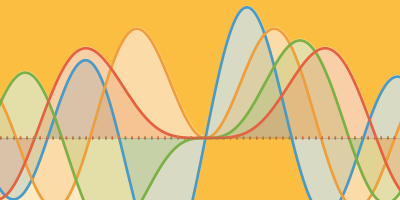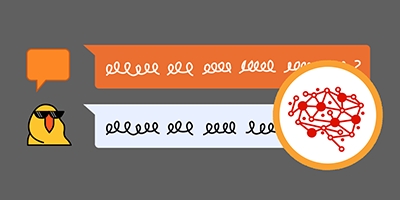Electric Circuits Made Simple with Wolfram

Electrical engineering is the technological field responsible for the design and development of components that make modern devices functional and efficient. In a computer, for example, the central processing unit (CPU) is just one of thousands of necessary parts that are designed and managed by electrical engineers. Other electrical components include those that handle energy distribution, integrate measuring sensors, process various signals, control voltage levels and produce outputs such as sound and images. This complex orchestration of components ensures that computers and other electronic devices operate reliably and effectively.
I’m pleased to announce a new Wolfram U interactive course for beginners that will introduce a new audience to the fascinating field of electrical engineering, with a focus on the fundamental aspects of analyzing and designing electric circuits. Introduction to Electric Circuits is an extremely accessible online course that uses the interactive features of Wolfram Notebooks along with imported Wolfram System Modeler models and data to provide a rich learning environment. You’ll begin by exploring essential concepts such as voltage, current and resistance. From there, you’ll advance to learning various methods for analyzing complex circuits. A significant portion of the course is dedicated to operational amplifiers, which are highly versatile devices used in a wide range of applications. By the end of the course, you will have a solid foundation in electrical engineering principles and practical skills for circuit design.
You can start exploring this course by clicking the following image:
Motivation from History
Since the invention of the transistor in 1947, we have witnessed exponential technological growth. This progress led to the development of digital computers, which now surround us in our daily lives. However, before digital computers dominated the world, computations were performed using analog computers. Analog computers can simulate systems from different physical domains. For example, using electric circuits, we could solve the differential equations of a mechanical system, allowing us to experiment by changing parameters and observing the results. Even though we typically no longer use analog computers, many tasks can still be performed more efficiently (and sometimes exclusively) by using electric circuits, for example amplifying the voltages of sensors to a level that can be handled by other components of the system. As mentioned before, a computer requires many other circuits in addition to the CPU to function. Learning to design these circuits is crucial for continuing technological advancement, especially in fields like electric vehicles, renewable energy and more.
This course will get you started with electric circuits, providing you with the fundamentals to continue your journey.
Overview
Electrical engineering is a broad subject, and this course focuses on getting you to the point where you can design circuits based on operational amplifiers. We have divided the course into four sections to gradually build your knowledge.
First, we provide a basic introduction to some of the main electrical components, offering a nontechnical overview to help you intuitively understand how electric circuits work. Next, we cover fundamental theoretical concepts, such as current, voltage and resistance. With this foundation, we move on to the analysis methods used to understand the behavior of complex electrical networks. Finally, we dive into designing circuits using various operational amplifier configurations.

The course spans 26 lessons with videos that run from 5 to 20 minutes. You can complete it in a little over 4 hours. The only prerequisites are high-school level physics, algebra and basic calculus. However, knowledge of signal processing is advisable for some of the lessons.
In the following sections, we’ll show you what the course looks like.
Lessons
The lessons contain dozens of example circuits. All the diagrams, plots and models that you’ll see are created using System Modeler. Many of the simulations shown in the notebooks are interactive. You can experiment with the simulations by changing parameters and quickly checking the results. If you want to go deeper, you can open the models directly in System Modeler, modify them as you please and run simulations. You can create your own circuits using the vast library of components included with System Modeler.

Each lesson is accompanied by a notebook containing more detailed information about the lesson. It also includes a list of references to books that will help you expand your knowledge of the topic.
Exercises
Each lesson contains exercises that will challenge your knowledge of electrical engineering. You’ll be asked to design circuits, derive formulas and answer questions regarding the lesson contents. The solutions are provided in case you get stuck.

Applications
Throughout the course, we examine multiple example circuits, primarily used in audio applications. We analyze circuits such as oscillators, filters, amplifiers and envelope generators. These circuits can be used to create a functioning analog synthesizer, like those used to produce countless hit songs over the past four decades.
Audio circuits are both fun and easy to understand. When putting them together, the results can be very exciting.
Quizzes
After each section you’ll find a quiz where you can test your level of understanding. All the questions are based on the contents of the lessons in multiple-choice format. If you paid attention to the lessons, it should be easy for you to spot the correct answer. You’ll receive your results instantly after submitting your quiz.

Course Certificate
If you complete all the lessons and quizzes, you will earn a certificate of course completion showing your knowledge in the field of electrical engineering. Check your progress in the course by clicking “Track My Progress” in the table of contents or using the icon at the top of the course framework. Easy-to-read progress charts quickly communicate the number of videos and quizzes you need to finish, and your certificate is automatically generated upon completion.

This course also has an optional final exam that you can take after completing all of the material. This final exam has more questions and a higher difficulty than the quizzes. After passing the exam, you will receive a Level 1 proficiency certification in electric circuits. All Wolfram certificates can easily be added to your resume or social media profile!
A Building Block for Success
Even though this course is an introduction to electric circuits, it covers a wide variety of topics and provides a strong theoretical foundation, enabling you to continue your learning in other areas of electrical engineering.
Acknowledgements
This course is the result of the work of the Wolfram U and System Modeler teams. I would like to thank all who reviewed the course and gave me very valuable feedback: Devendra Kapadia, Jan Brugard, Quentin Lambert, Ankit Naik, Vedat Senol, Sergio Vargas and Mariusz Jankowski. I would also like to thank the Wolfram U team, who helped to produce and release the course: Anisha Basil, Cassidy Hinkle, Joyce Tracewell, Abrita Chakravarty, Bob Owens, Mariel Laugesen and Laura Crawford.




Comments